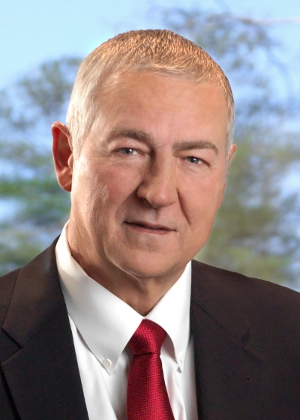SAS CEO Jim Goodnight on why not all tweets are equal

Business intelligence chief talks SaaS, high-performance computing, iPads and social networking
The world's largest privately-owned software company, SAS, has been helping organisations use their data to make decisions for more than 30 years. silicon.com met CEO and co-founder Dr Jim Goodnight to discover why he's excited about SaaS, why social networks should be viewed with some scepticism, and why Apple's iPad marks a turning point for mobile computing.
Business intelligence software company SAS helps organisations makes sense of the deluge of data that they generate - and use to make decisions - every day.
But increasingly the data that could prove useful to business strategy is not just created inside a company's four walls but also on social networks such as Facebook and Twitter.
SAS allows companies to track customer opinion with its Social Media Analytics package, and in January will launch Conversation Center, a product designed to help organisations capture and identify relevant tweets.
For Goodnight, social networks are something of a double-edged sword for business - on the one hand providing real-time feedback from customers but on the other acting as an echo chamber for whingers.
"It's an instantaneous reaction - showing you how people feel about your brand," he said.
"In the long run it is probably just going to be an accepted part of doing business, that you have to keep your finger on the pulse and know what people are saying about you.
"My main concern about it is that I believe that tweets and blogs tend to be done more often by negative people. That has to be taken into account."
As a result, Goodnight believes that companies shouldn't take tweets and Facebook posts at face value, but should instead question who is doing the posting and what their motive might be.

SAS CEO and co-founder Dr Jim Goodnight says the business intelligence company is moving into social media as fast as it can
(Photo credit: SAS)
"You need to do some surveys to try to determine how much weight to attach to these negative comments. Ask, 'Is this the first time this person has tweeted badly about the company?' If it's not then [you could say] 'This person has a bad attitude, let's ignore them'."
With these caveats in mind, Goodnight said social networking is an area SAS is "moving into as rapidly as we can".
Away from social networking the Apple iPad is another consumer technology that is winning over business people - and for Goodnight the popularity of the tablet PC in 2010 cannot be ignored.
"With things like the iPad we can finally see enough real estate on these mobile devices to take an interest in making sure that all of SAS is accessible from them," Goodnight told silicon.com.
Goodnight said from next year the company will release applications tailored to the display capabilities of modern smartphones and tablet devices.
"One of our planned releases over the next year is on mobile hardware. Our [current] mobile applications are mostly HTML kind of stuff. It's not taking advantage of all the graphics capabilities that are available," he said.
Turbo-charging analyticsThe technology that is changing the scope of what business analytics can achieve, Goodnight said, is...
...high-performance computing (HPC).
HPC - the practice of performing calculations on a grid of fast computers - is making complex business analytics available in record time.
"We can run some of the large analytical jobs one thousand times faster than we used to," Goodnight said.
In the financial sector Goodnight said it would allow organisations to carry out "real-time risk assessment" and "stress testing" of investments before committing any money. At the recent Premier Business Leadership Series conference in Las Vegas Goodnight said high-performance computing is allowing banks to calculate the risk of financial investments within minutes.
HPC analytics is also making it possible for retailers to test what stock or special offers will generate the largest sales before making the changes in stores.
"In terms of being able to do merchandise planning, they used to make a change in the plan and go away for a couple of hours and come back and see the effect of that plan," said Goodnight.
"Now that happens almost instantly, so they can try multiple scenarios. It gives the user a tremendous capability that they never had before."
For Goodnight HPC provides the key to analysing datasets running into tens of terabytes of data, which would previously have been too vast and complex for business analytics to tackle.
"The speed at which computing is being done these days allows us to think of bigger and bigger problems that we have never thought of before," he said.
Where SAS meets SaaSAs a provider of software and services to more than 45,000 customer sites worldwide SAS has to devote much time to testing software to make sure it runs on each of its customers' computing hardware set-ups.
Those demands are one reason why software as a service (SaaS) - offering software on demand via the internet - is attractive to Goodnight because it would allow the company to simplify the headache of testing.
"When you ship to customers with all sorts of environments then the testing is a nightmare," he said.
SAS delivers a "huge mixture" of SaaS offerings, according to Goodnight, who said SaaS was a growing part of the business, a trend that is good news as far as testing is concerned.
"We could cut a lot of costs out if we didn't have to do that [testing]. It would cost us a lot less money to develop software for one machine," he said.